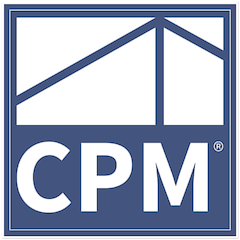Leasing Occupied Properties vs. Vacant and Rent-Ready Properties: Pros and Cons for Landlords
This is a subtitle for your new post

As a landlord, one of the most critical decisions you’ll face is whether to lease out a property that is currently occupied or one that is vacant and ready for new tenants. Each approach comes with its own set of advantages and disadvantages, and understanding these can help you make a more informed choice. In this blog, we’ll dive into the benefits and drawbacks of both leasing occupied properties and renting out those that are vacant and in move-in condition.
Leasing Occupied Properties
Advantages:
- Reduced Vacancy Time: Leasing an occupied property can minimize the downtime between tenants. If your current tenants are moving out soon but you find a prospective tenant who is willing to move in before the current lease ends, you can effectively avoid the vacancy period. This can be a significant advantage in high-demand rental markets.
- Immediate Cash Flow: With a property that’s already occupied, you have the potential to maintain continuous cash flow. By negotiating with the current tenants and finding new tenants before the current lease expires, you can ensure that rent payments keep coming in without interruption.
- Pre-Screened Properties: Sometimes, properties with existing tenants are already well-maintained, and tenants may have even been a part of the property’s upkeep. If current tenants are agreeable, you can leverage their feedback and maintenance efforts as a selling point.
- Potential for Improved Negotiations: Existing tenants might be more amenable to showing the property or coordinating with you if they know they’re leaving soon. This can simplify the process and potentially lead to smoother negotiations with prospective tenants.
Disadvantages:
- Limited Showing Times: Coordinating property viewings with occupied units can be challenging. Tenants may have limited availability or may not keep the property in a show-ready condition, which could impact the attractiveness of the property to prospective renters.
- Tenant Privacy Concerns: Existing tenants might feel uncomfortable with frequent showings or inspections. This can lead to tension between you and the current tenants, which may affect their willingness to cooperate. This is specially important in the post Covid era.
- Potential for Increased Wear and Tear: When a property is shown while occupied, there’s a risk of additional wear and tear. Prospective tenants moving through the space could contribute to this, potentially leading to more maintenance work before the new tenants move in.
- Complicated Lease Transitions: The transition from one tenant to another can be more complicated with an occupied property. You need to manage lease dates, ensure compliance with local rental laws, and handle the logistics of moving tenants in and out while minimizing disruption. This is especially important when complying with move in dates and Home Owners Association approvals if properties are located in an HOA. For example if an HOA has a requirement of only 12 month leases and the move in date is pushed back for any reason you may not be able to adjust the approved lease dates and end up receiving less than 12 months rent in the new lease.
- No time to perform repairs to get the property in rent ready condition: If one tenant is moving out and the next tenant is moving in there is no time to perform the necessary maintenance and repairs in between tenants. There is always some ordinary wear and tear so in between tenants there is almost always the need of some maintenance and repairs. You must also take into account some damages to the property that can be caused during the existing tenant move out process, that even though the cost should be deducted from the existing tenant's security deposit, the work should be done prior to the new tenant moving in and the extra time for this unanticipated work must be taken into account.
- Landlord's exposure to liability - existing tenant: Showing occupied properties exposes the landlord and its agent to additional liability to the existing tenant because what if the prospects touring the property damage any of the current tenant's personal property. Or what if some personal items disappear after a showing? Furthermore in the new world we live in, full of scammers, especially in rental housing, what if you are showing the property to somebody that has other intentions than renting such as planning to rob or assault the existing tenant at a later date or take jewelry or other personal property during the showings as a professional thief?
- Landlord's exposure to liability - new tenant: Showing occupied properties also creates potential liability for the landlord regarding the new tenant because what if a lease is executed with the new tenant and the existing tenant has a problem and cannot vacate as anticipated but the new tenant is waiting with his/her moving truck to get into the house? What if the required repairs are not completed on time for several reasons and the proeprty cannot be delivered as agreed to the new tenant?
Leasing Vacant - Rent Ready Properties
Advantages:
- Enhanced Appeal: A vacant and rent-ready property can be shown in its best possible light. Without the current tenants’ personal belongings or potential mess, prospective tenants can more easily envision themselves living in the space, which can make the property more appealing. This may be the most important advantage in showing vacant- rent ready properties. People do not have the vision when they see a furnished occupied property, cannot see the spaces where to locate their furniture and personal property, in some cases the perception may be the property is too small or lacks space, being the reality the contrary. In other cases the property may not show as clean as it should, kitchen sink full of dirty dishes, unmade beds, towels and underwear all around a bathroom, are all factors that negatively impact a showing and the prospect's perception of the property.
- Flexible Viewing Times: With the property empty, you have more control over scheduling viewings and open houses. This flexibility can increase the number of potential tenants who see the property, improving your chances of finding a suitable renter quickly.
- Less Wear and Tear: An empty property is less likely to suffer from wear and tear caused by multiple showings. You can ensure the property is in pristine condition for each prospective tenant, which might result in fewer repairs and maintenance before leasing.
- Streamlined Leasing Process: Managing leases for vacant properties can be simpler. There’s no need to coordinate with current tenants or handle the logistics of overlapping leases. This can make the transition process smoother and more efficient.
- Sufficient time to make necessary rent ready repairs and maintenance
- Eliminates potential liability towards existing tenant since already vacated the premises
- Eliminates potential liability towards new tenant for not being able to deliver the property in its agreed condition or at the contractual date since the proeprty is already vacant and ready to move in
Disadvantages:
- Vacancy Costs: One of the biggest drawbacks of having a vacant property is the cost. While the property sits empty, you’re responsible for covering the mortgage, utilities, and potentially other expenses without rental income to offset these costs.
- Initial Condition: Even if a property is rent-ready, it may not be perfect. Depending on how long it has been vacant, there might be issues such as dust, minor maintenance needs, or outdated decor that could affect its appeal to prospective tenants. Regular visits must be performed, especially in between showings to asure the proeprty is in pristine condition to be shown to potential tenants.
Deciding whether to lease an occupied property or a vacant, rent-ready one involves weighing several factors as explained above. One has to pay special attention and consider all factors to deciding if showing an occupied property is the way to go.
Ultimately, the best choice depends on your specific circumstances, including the state of the rental market, the condition of the property, and your ability to manage tenant relationships. By carefully considering these factors, you can make a more informed decision that aligns with your financial goals and property management strategy.
In our office our policy is only to rent and show rent ready vacant properties due to all the negative implications of showing and trying to rent a property while occupied.
Share this post













